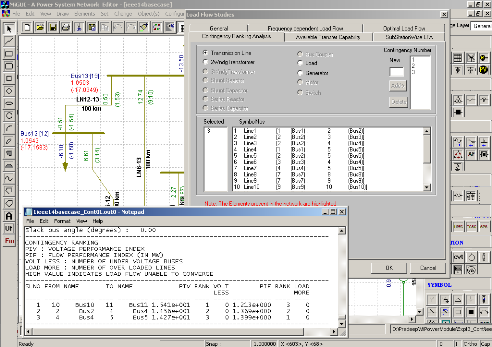State estimation deals with the real-time measurements to obtain the best estimate of the current state of the power system, based on the network connectivity, system parameters and the analog measurement as inputs. With the error minimization algorithm, state estimation algorithm provides consistent base case, used for further power system analysis.
Adequacy of the measurements is assured by observability analysis, required for successful run the state estimation.
The key features of the module are :
- Standard Weighted Least Square (WLS) method
- Bad data identification and suppression
- Observability Analysis for RTU Locations
The output of the State estimation is estimated load, generation and voltage profile along with the real and reactive power flows. This is used for carrying out power system simulation like, load flow scenarios, real and reactive power optimization and security analysis.
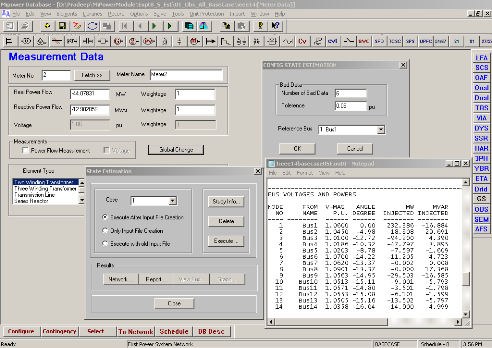
The optimum utilization of power system resources is always the highest priority of the system operators. The Optimal Power Flow(OPF) provides the optimum unit generation with the minimum overall cost of generation, while satisfying the transmission system constraints. The OPF is used in economic analyses of the power system by providing “bus incremental costs” (BICs). The BICs are useful to determine the marginal cost of power at any bus in the system.
Optimal power flow also computes the incremental or marginal cost of power transmitted/ traded between multiple power companies while satisfying the security constraints on to the internal networks as well as tie lines.
The following objectives can be set for the OPF :
- Generation cost minimization
- System loss minimization
- Overload alleviation
The enables the system planners and operators with the optimum solutions expediting the decision making.
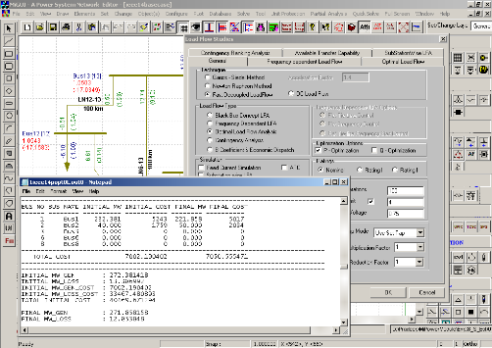
To optimize the reactive power resources, Reactive Power Optimization module is aimed at improving the voltage profile of low voltage pockets in the system.
The objectives for the reactive power optimization are :
- Alleviation of the system bus voltages
- Enhance voltage stability or loadability
Using the control variables are :
- The transformer tap settings (T)
- The generator excitation settings (V)
- The switchable and controllable VAR compensator
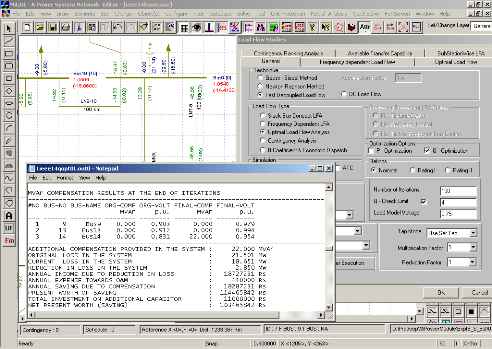
In operating the system for any load condition, the contribution from each plant and from each unit within a plant must be determined so that the cost of delivered power is minimum. The methodology used during economic scheduling is to minimize the total cost (generation + loss) with the generation schedule being considered within specified minimum and maximum generating limits.
Economic operation of power system deals with sharing the total load to minimize the overall generation cost. It also includes dividing the generations optimally to reduce losses in the system.
The output of the program gives the schedule of the generators and the overall cost.
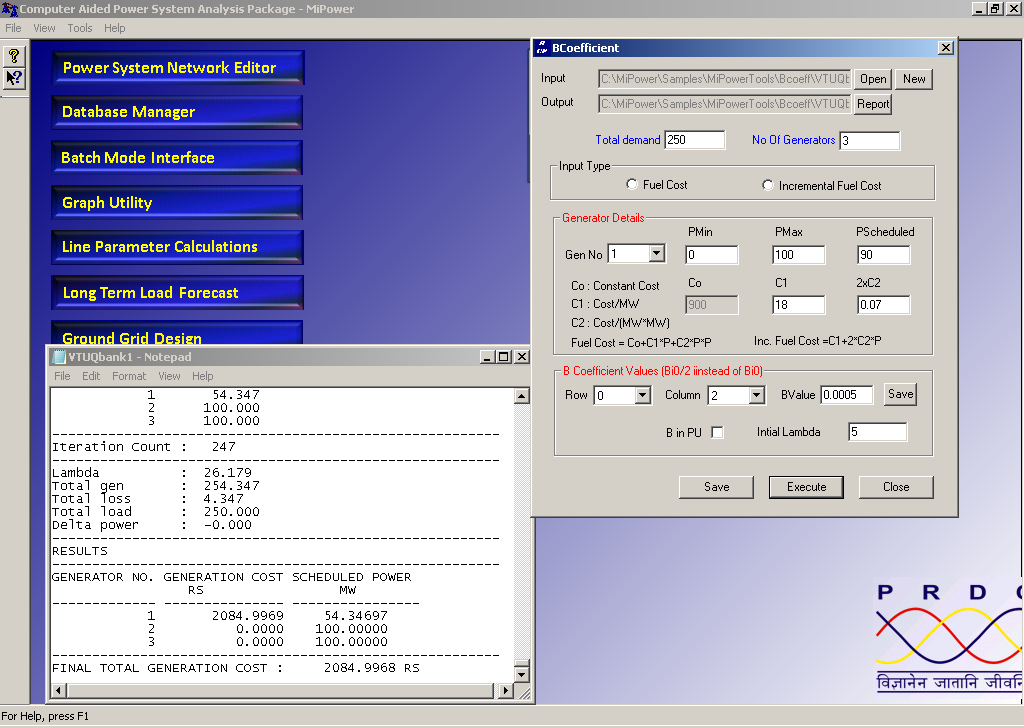
Load flow analysis performs static security analysis for a given system so that the system is operated defensively. Due to contingencies, the system operations may enter into emergency state, wherein the operator has to take fast actions to restore the system back to normal.
Contingency definition accommodates all types of equipment outages and also the combination of them. The outage scenarios are studied using robust load flow analysis.
The contingencies are ranked based on :
- voltage performance index (PIV)
- overload performance index (PIF)
The worst case scenario will be top ranked having highest number of voltage and line loading violations.
The output of the contingency analysis is used for security assessment and enhancement.
